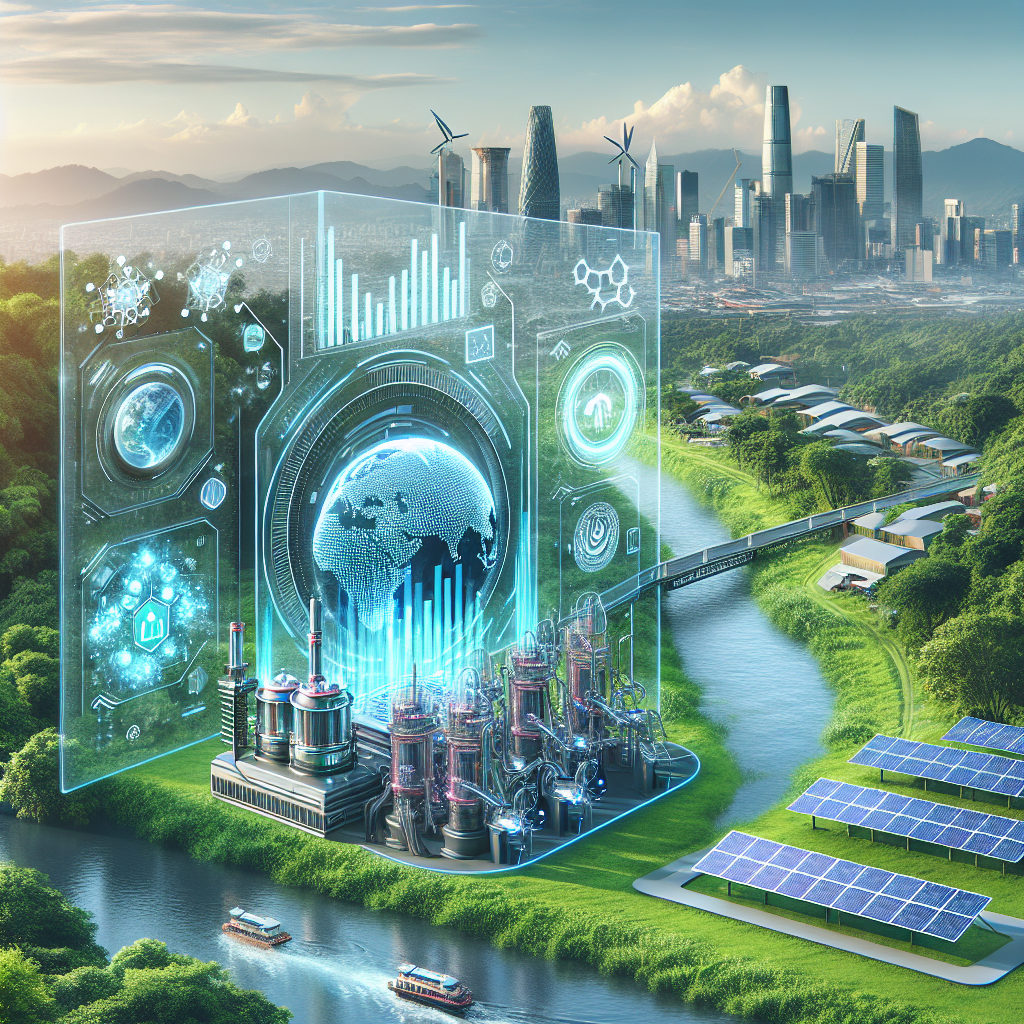Climate change is one of the most pressing issues of our time. With rising global temperatures, sea levels, and extreme weather events becoming more frequent, the need for effective solutions to combat climate change has never been more urgent. One promising avenue for addressing this challenge is the intersection of technology and environmentalism, particularly the use of Artificial Intelligence (AI) in climate change analysis. In this article, we will explore how AI is transforming climate change analysis and enabling more targeted and effective solutions to mitigate the impacts of global warming.
The Role of AI in Climate Change Analysis
AI refers to the simulation of human intelligence in machines that are programmed to think and act like humans. In the context of climate change analysis, AI can be used to process vast amounts of data from various sources, including satellite imagery, weather stations, and climate models, to identify patterns and trends that may not be immediately apparent to human researchers. This data-driven approach allows scientists to make more accurate predictions about future climate trends and assess the potential impacts of various mitigation strategies.
One of the key advantages of AI in climate change analysis is its ability to analyze complex, multidimensional datasets quickly and efficiently. This allows researchers to identify correlations and patterns that may not be evident through traditional methods. For example, AI algorithms can analyze satellite imagery to track deforestation rates, monitor changes in sea ice coverage, or predict the spread of wildfires with a high degree of accuracy.
Applications of AI in Climate Change Analysis
AI is being used in a wide range of applications to address climate change, from predicting extreme weather events to optimizing energy use in buildings. Some of the key areas where AI is making a significant impact include:
- Climate Modeling: AI algorithms are being used to improve the accuracy of climate models, allowing scientists to make more reliable predictions about future climate trends.
- Disaster Response: AI-powered systems can analyze real-time data to predict and track natural disasters such as hurricanes, floods, and wildfires, enabling faster and more effective response efforts.
- Renewable Energy: AI is being used to optimize the production and distribution of renewable energy sources such as solar and wind power, helping to reduce greenhouse gas emissions and combat climate change.
- Carbon Sequestration: AI is being used to identify new ways to capture and store carbon dioxide from the atmosphere, helping to mitigate the effects of global warming.
- Sustainable Agriculture: AI-powered systems can analyze soil and weather data to optimize crop yields, reduce water usage, and minimize the environmental impact of agriculture.
Challenges and Opportunities
While AI offers significant potential for transforming climate change analysis, it also brings a number of challenges. One of the key concerns is the potential bias in AI algorithms, which may reflect the biases of the data used to train them. This can lead to inaccurate or discriminatory results, undermining the effectiveness of AI solutions in addressing climate change.
Another challenge is the complexity of AI algorithms, which may be difficult to interpret or explain to policymakers and the public. Transparent and explainable AI models are critical to gaining trust and acceptance for AI-driven solutions to climate change.
Despite these challenges, the opportunities offered by AI in climate change analysis are vast. By harnessing the power of AI to analyze vast amounts of data and identify new patterns and trends, scientists can develop more targeted and effective strategies for mitigating the impacts of global warming. From predicting extreme weather events to optimizing renewable energy production, AI has the potential to revolutionize our approach to addressing climate change and building a more sustainable future for all.
Conclusion
The intersection of technology and environmentalism holds great promise for addressing the urgent challenges posed by climate change. AI, in particular, has emerged as a powerful tool for transforming climate change analysis and enabling more targeted and effective solutions to combat global warming. By leveraging AI algorithms to process vast amounts of data and identify new patterns and trends, scientists can make more accurate predictions about future climate trends, assess the potential impacts of various mitigation strategies, and develop innovative solutions to reduce greenhouse gas emissions and build a more sustainable future for all.
FAQs
1. How is AI being used to address climate change?
AI is being used in a wide range of applications to address climate change, from improving the accuracy of climate models to optimizing renewable energy production and reducing greenhouse gas emissions.
2. What are some of the challenges of using AI in climate change analysis?
Some of the key challenges of using AI in climate change analysis include potential bias in AI algorithms, the complexity of AI models, and the need for transparent and explainable AI solutions.
3. How can AI help to mitigate the impacts of global warming?
By analyzing vast amounts of data and identifying new patterns and trends, AI can help scientists develop more targeted and effective strategies for mitigating the impacts of global warming, from predicting extreme weather events to optimizing renewable energy production.
